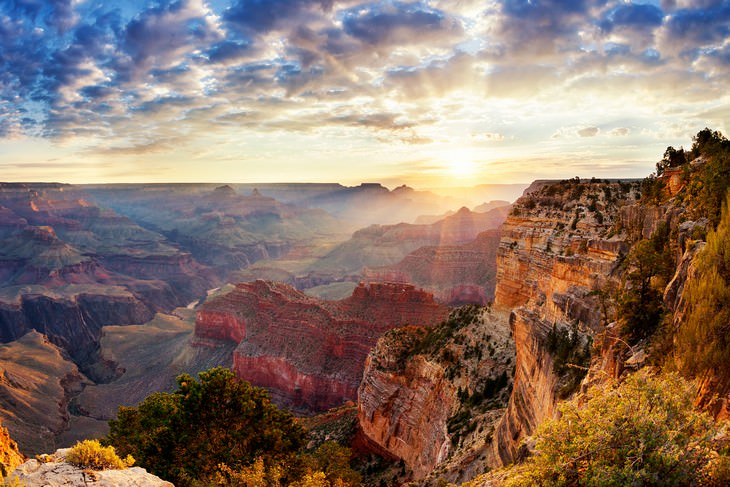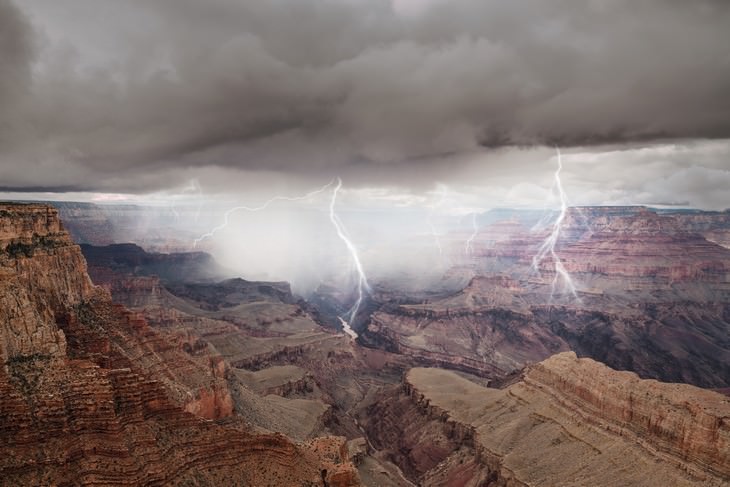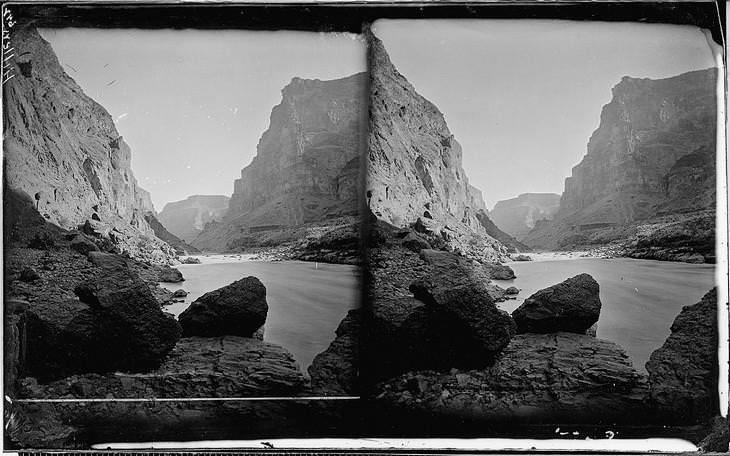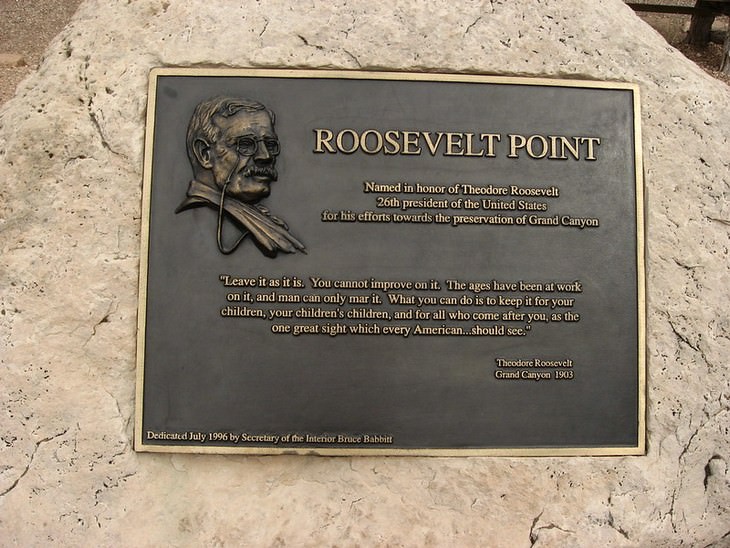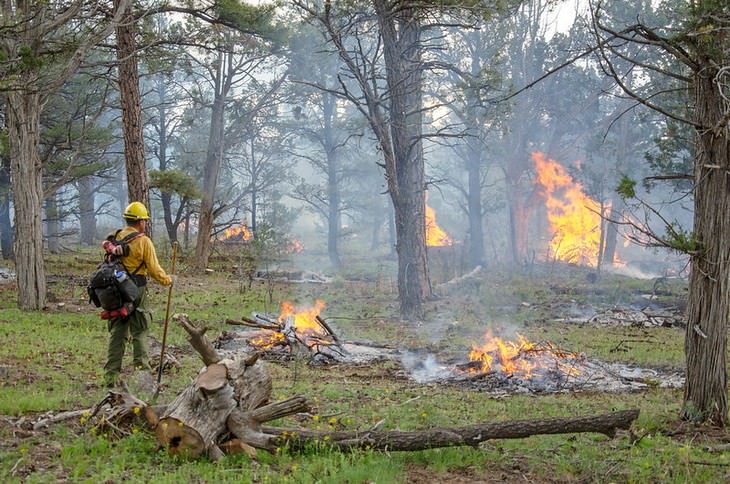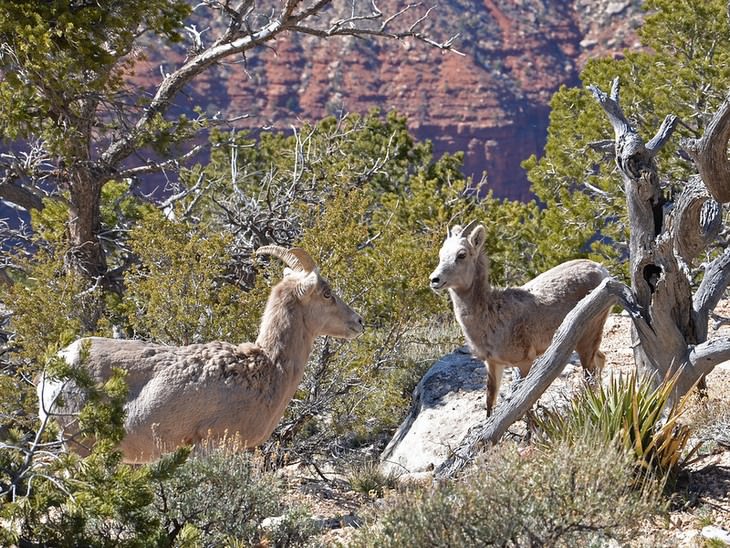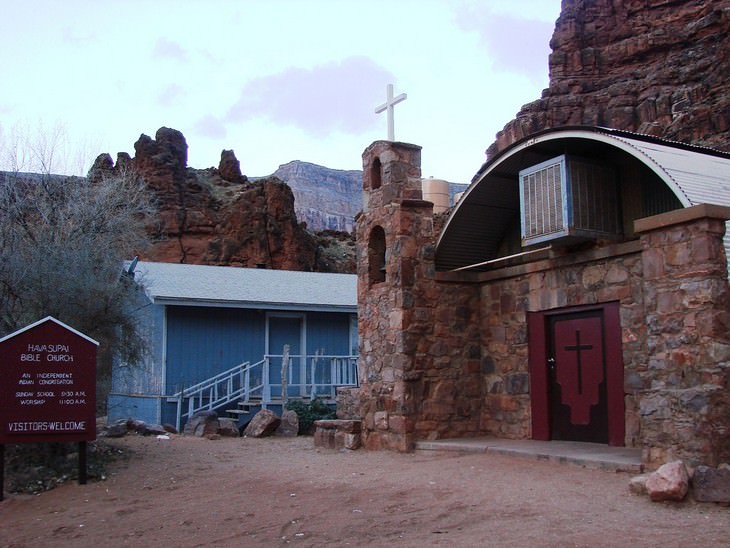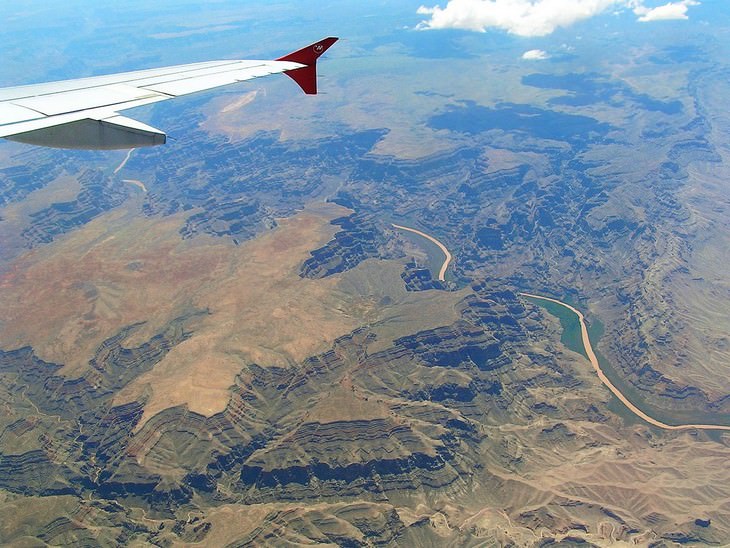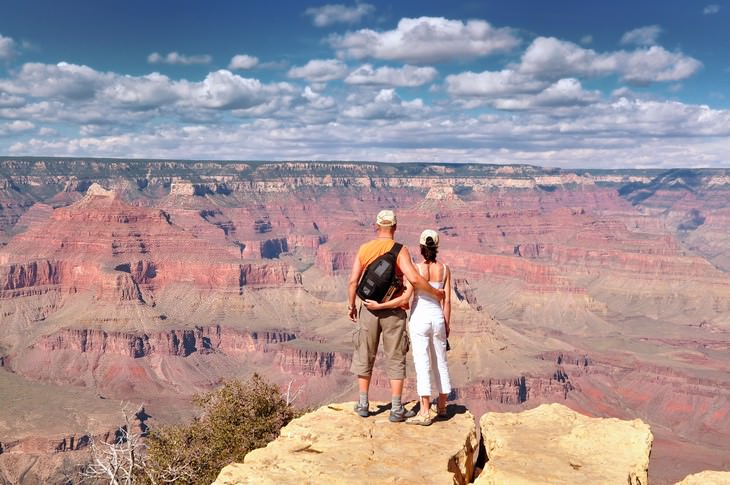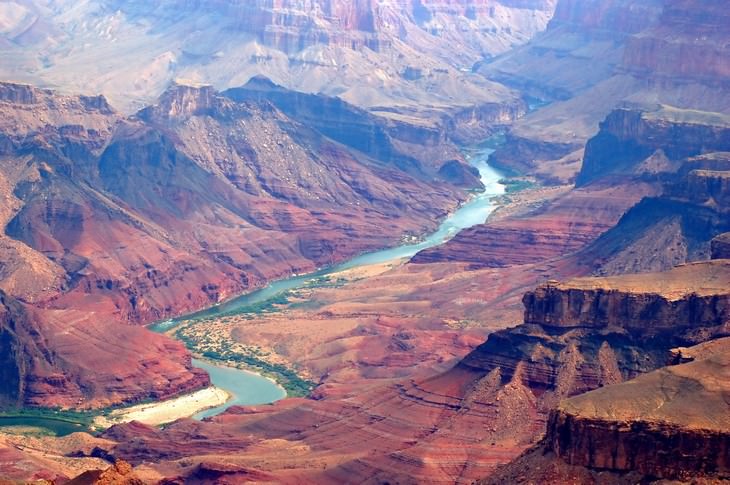1. Its Actual Size
It’s not really a surprising fact that the Grand Canyon is very, very big. It is 1,217,403.32 acres or 1,904 square miles, to be precise. To give you an idea of just how enormous that is, the entire state of Rhode Island could fit into the canyon. While the north and south rims are only 10 miles (16 km) apart, it takes about 5 hours and 215 miles (346 km) of driving to loop around it and get from one end to the other.
2. The Unique Temperature System
Not only is the Grand Canyon impressive in size, it is also 6,093 feet (1857 meters) deep at its lowest point. Because of the sheer depth, the temperature is drastically different in different spots of the canyon, depending on the elevation. At the south rim, the highest temperature is 63°F (17°C) while at the north rim it is only 56°F (13°C). Phantom Ranch, which is nestled far below the two rims (4,800 feet (1,500m) lower than the South Rim, and about 5,800 feet (1,800m) lower than the North Rim) is the warmest spot, with average temperatures of 86°F (30°C) during the summer months. In fact, Phantom Ranch is the driest and hottest spot of the canyon, and its located only 8 miles (14.5 km) from the coldest and wettest one - Bright Angel Ranger Station!
3. The Grand Canyon is About 70 Million Years Old
"About" is the keyword here. Scientists cannot agree on the exact age of the canyon. Centuries ago, the Colorado River has sliced through thousands of feet of unblemished rock that held vital information, which could tell scientists how old the landscape truly is. According to a 2014 study, part of the canyon is as old as 70 million years. However, most of it dates back about 5 million years ago, when the Colorado River first cut through.
What we do know for certain, is that the oldest human artifacts found in the canyon date back 12,000 years ago. The earliest inhabitants of the area were Native Americans and that's still true today. The Havasupai tribe has been calling the Grand Canyon home for over 800 years, and if you happen to visit the area, you can explore the reservation as well.
4. Roosevelt Contributed a Lot for Grand Canyon Preservation
Theodore Roosevelt visited the Grand Canyon in 1903 and was deeply moved by the unique landscape. He knew the natural wonder had to be protected in its pristine state, and preserved for future generations - and he turned it to his cause. The national mood was on his side. The idea of conservation of natural resources and the national park concept was just gaining momentum at the turn of the 20th century. In 1906, Roosevelt signed a bill that proclaimed the area of the Grand Canyon Game Reserve, and in 1908, he established the Grand Canyon National Monument. Roosevelt Point, located at the North Rim, holds a memorial honoring the late president’s contributions.
5. If You See a Fire in Grand Canyon, Let It Burn
When you see a fire occurring, your natural instinct is to put it out, right? Well, that is the last thing you should do when a fire starts in the Grand Canyon. Natural fires have been occurring in the area for centuries and they’re actually good for the ecosystem. They help naturally thin the forest, recycle nutrients into the soil, and stimulate new plant growth. During the past century, fires were often suppressed by concerned people. This led to an unnatural buildup of live and dead trees, shrubs, and grass. These days, the fires are controlled by fire managers but are never completely put out.
6. Grand Canyon is Full of Wildlife
The Grand Canyon is home to 373 species of birds, 91 species of mammals, 58 species of reptiles and amphibians, and 18 species of fish. The reason that fish are the most uncommon species is that, prior to modern flood control measures, the Colorado River was a uniquely inhospitable habitat due to frequent floods and extreme temperatures in both summer and winter. As a result, only 8 of the fish species are actually native to the river.
7. The Most Dangerous Inhabitant of the Canyon
All of the southwest is full of rattlesnakes, and the Grand Canyon is no different. Many hikers are afraid to encounter snakes when exploring the canyon, but the truth is the park never had a death caused by a venomous snake bite. There are, however, snake-related lore and stories. For example, a woman who survived the raging river during rafting is said to have managed to swim ashore, only to be greeted by a rattlesnake bite on the beach. She was rescued in a helicopter and survived thanks to quick medical care.
The biggest troublemaker on the preserve is actually the rock squirrel! Dozens of visitors are bitten by the animal every year, trying to feed it.
8. There is a Town in Grand Canyon
It’s very small, but a human population does still exist in the Grand Canyon. Supai Village is located within the Havasupai Indian Reservation and has a population of 208 people. It is the most remote community in the continental US, as it is inaccessible by road. It is also the last place in the country where mail is still distributed by mule.
9. The Plane Crash
A terribly unfortunate plane accident occurred over the Grand Canyon, which led to the founding of the Federal Aviation Agency. In 1956, two flights departed the Los Angeles international airport, one en route to Kansas City and the other to Chicago. The initial flight plans were different enough to not raise any concern. In fact, they were not supposed to meet at all. But due to the weather, both pilots had to shift in order to avoid the towering cumulus clouds that began to form. The two planes collided over the canyon after passing the same cloud on opposite sides. All 128 passengers on board perished. The subsequent investigation brought to light the deficiencies in air control at the time and prompted the foundation of the FAA.
10. The 1909 Hoax
In April 1909, the Arizona Gazette published a hoax report about the traces of a Tibetan-like civilization, found in an underground tunnel in the Grand Canyon. The archeologists were supposedly funded by the Smithsonian, but when asked about this, the organization denied the whole story claiming they never even heard the names of those researchers. To this day, some conspiracy theorists believe this may have been a government cover-up.
11. One of the Most Popular National Parks
During 2019, Grand Canyon was second only to the Great Smoky Mountains National Park in visitor numbers. A whopping 5.97 million visitors came to see the beauty of the canyon. To get some perspective, in 1919, there were only 44,170 visitors to the park. It is important to note that the Grand Canyon is not the deepest or largest in the world. Yarlung Tsangpo Grand Canyon in Tibet is 17,567 feet deep, making it more than 2 miles deeper than the Arizona Grand Canyon, as well as 30 miles longer. Despite that, the Grand Canyon is certainly the most famous canyon.
12. The Secret Caves
The canyon has still not revealed all its secrets. There are about 1000 caves in the park, but only 335 of them have been explored and recorded. That means 70% of the canyon’s caves are unknown to us. Only one, the Cave of the Domes on Horseshoe Mesa, is open to the public.

